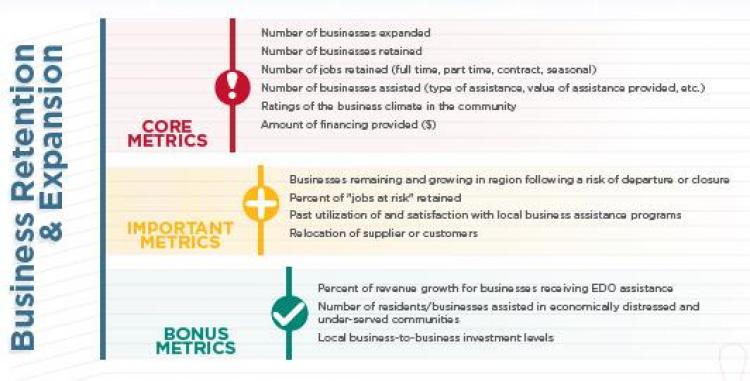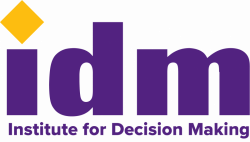Using Metrics To Tell Your Story
Businesses, workers, investors and community stakeholders all want to know whether your region, community, or organization is worth their investment. Depending on who you are interested in reaching, economic developers and community leaders can use a variety of metrics to demonstrate their value proposition. Metrics can be used to compare your region, community or organization to other similar or aspirational regions, communities or organizations (benchmarking); or metrics can be used to measure performance, wellbeing or progress (often tied to objectives within a strategic plan).
Economic development organizations (EDOs) frequently seek assistance from IDM to determine which metrics are best for telling their story. The initial step involves identifying who, what and why.
- Who is the potential audience? External audiences often include site selectors, potential workforce, and new or expanding businesses. Internal audiences include stakeholders such as funders, board members, and communities.
- What is the EDO trying to achieve? The EDO may want to focus on marketing their community or region for business and workforce growth, engage in public relations for organizational sustainability or growth, and/or measure the effectiveness of their programs and activities.
- Why do you need metrics? Is data the best way to help you tell your story to your selected audience, or accomplish what you are trying to achieve? In some cases, data may make you look great – in other situations, you may have to share a different, more personal perspective.
Once you know who, what and why, you can identify the types of metrics that will be most useful in connecting with your audiences. In 2014, the International Economic Development Council (IEDC) published “Making it Count, Metrics for High Performing EDOs” which offers an extensive menu of metrics for EDOs wishing to track progress and/or make comparisons. Figure 1 takes a snapshot from that publication as an example of some metrics that could be used to track an EDO’s performance for its internal audiences. As an organization, use metrics that show progress toward your mission and objectives.
Figure 1:

When benchmarking against peer or aspirational communities, an EDO might consider metric categories such as economic performance, workforce, innovation or business vitality, entrepreneurship and quality of place.
Once you have determined the metrics you are going to use, you will need to think about 1) how they are best used – as an indicator that is tracked over time, or as an indicator for comparison; and 2) how you will present them. Using the correct terminology when discussing metrics can help EDOs describe what they want to do with their selected indicators. Some key terms used when discussing metrics include:
- Economic indicators: key metrics that illustrate a specific aspect of the economy (or jurisdiction) being measured
- Benchmarks: comparative metrics used to contrast the performance of an organization or geography with peers (organizations or geographies that share similar characteristics) or aspirational organizations or geographies (which represent what you hope to become)
- Dashboard: a tool that provides visualization of key metrics – as stand-alone metrics or as benchmarks
- Scorecard: a metrics report that tracks performance over time, benchmarks against peers and/or other descriptive information
Some examples of dashboards and scorecards include:
- Iowa’s Competitive Dashboard. IDM assists the Iowa Business Council each year with the metrics in this dashboard that compares Iowa to the other 49 states on 25 metrics.
- Minneapolis-St. Paul Dashboard. This dashboard highlights indicators for several variables as well as change on critical economic, environmental, and social outcomes in the region.
- Charleston Regional Development Alliance Regional Economic Scorecard. This regional report offers performance data, benchmarking and other information to guide local decision-makers in future planning.
Whatever you decide on how you will use or present metrics, it is important to keep in mind that the best metrics:
- Are current and accessible (easy to update)
- Are understandable (not too technical)
- Allow for comparison to peers (similar size and attributes)
- Are an actual number (not just a relative ranking)
- Are predictive (forward-looking)
- Are tied to specific strategies
If you need assistance with metrics to tell the story about your region, community or organization, IDM can help. Whether you need to identify metrics that help you benchmark your jurisdiction against peers, or assess your organizational programs and progress, we will be happy to talk you through your audiences and what you are trying to achieve through measurements.

